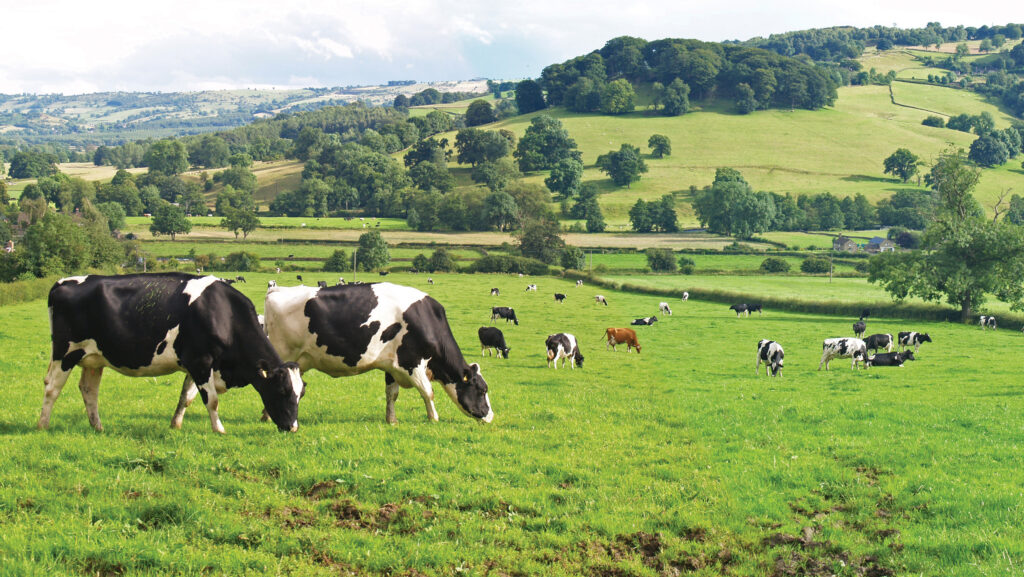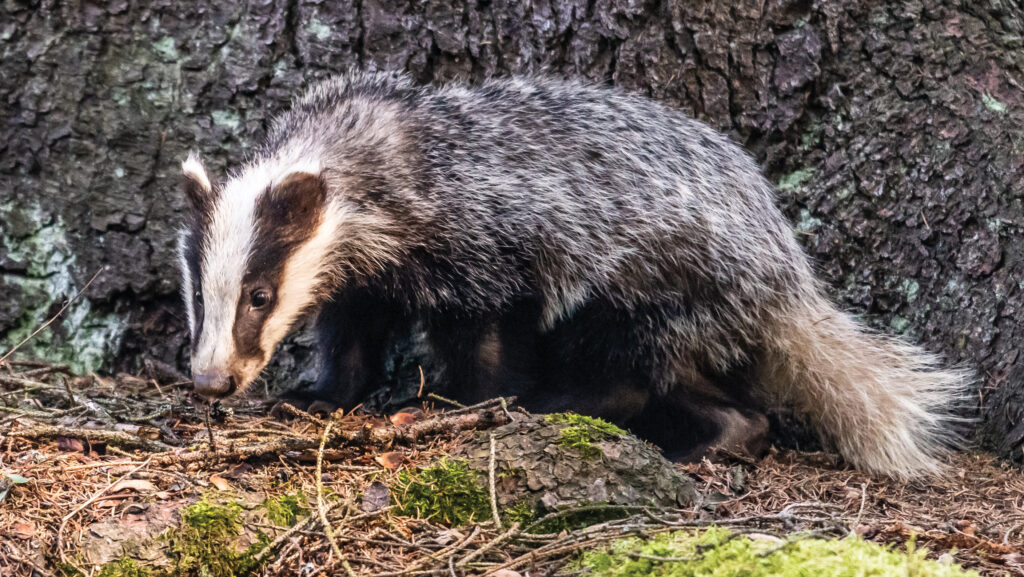Bovine TB: 2038 eradication goal achievable with bold action
 © Mike Dabell/Istockphoto
© Mike Dabell/Istockphoto England’s goal to eradicate bovine tuberculosis (TB) by 2038 remains alive – but only just.
In the past decade, 274,000 cattle have been slaughtered and more than 230,000 badgers culled. In 2024 alone, 21,586 cattle were lost, costing more than £22m in compensation.
The refreshed Godfray bovine TB strategy review update Godfray bovine TB strategy review update (PDF), published on 4 September 2025, shows progress is being made with falling TB rates, but warns that urgent action is needed.
TB costs taxpayers about £100m a year, causing devastation to farmers’ livelihoods and mental health.
See also: How one dairy farmer is getting a grip on bovine TB
Without increased investment in vaccination, improved diagnostics, stronger biosecurity, better IT systems, and smarter, risk-based cattle trading, the 2038 eradication target is in jeopardy.
“We think achieving the bovine TB free status by that time is possible, but it is going to be tough,” says Professor Sir Charles Godfray, director of the Oxford Martin School, Oxford University, who chaired the review.
The word “tough” sets the review’s tone, but overall it is cautiously optimistic.
Major challenges such as inconsistent testing, vaccine delays, political fatigue, and wildlife transmission persist. The coming years will be critical.
The review also challenges the farming industry to take greater responsibility.
It highlights a lack of investment in practical, “no regrets” biosecurity measures, such as raising water troughs, securing feed stores at night, and using tools such as the ibTB map to guide cattle-purchasing decisions.
More enhanced testing
Experts have long highlighted the limitations of statutory testing.
The standard tuberculin skin test has high specificity, but only about 80% sensitivity, meaning infected cattle can often go undetected, especially in large beef and dairy herds.
Testing remains the frontline defence. Since the initial Godfray review in 2018, England has been using more sensitive diagnostics, notably the interferon gamma blood test in high-risk areas.
As of 1 September 2025, a policy update means voluntary gamma testing is now available to eligible cattle keepers in the high risk and six-monthly edge areas whose herds have lost their officially TB free (OTF) status due to a breakdown.
Previously, gamma testing was only used compulsorily in severe or repeat cases. However, farmers must first obtain approval from the Animal and Plant Health Agency.
The review also supports flexible, non-statutory testing on TB-free farms, using tools such as Enferplex and gamma interferon, without triggering automatic culling or movement restrictions.
Lyndon Edwards, a dairy farmer based near Chepstow and chairman of the AHDB’s Dairy Sector Council, says this change would be fundamental to allow farmers to manage TB on farm like they do for other infectious disease such as Johne’s.
“If we can identify high-risk animals and use biosecurity protocols on farm to ensure cattle-to-cattle spread is kept to a minimum and those animals have a managed exit from the herd, we can massively reduce the risk of a future breakdown,” he adds.
Derbyshire vet Sarah Tomlinson, lead veterinary science expert at the AHDB and technical director of the TB Advisory Service, agrees.
She believes it would give farmers more control and could be a “game-changer” for on-farm TB management. “It’s quite a radical idea, but a step towards smarter, risk-based TB control with improved biosecurity,” she says.
Cattle vaccination still years away
One of the most promising developments is the planned cattle BCG vaccine, supported by a “Diva” test to distinguish infected from vaccinated animals.
Field trials began in 2021 in England and Wales, but commercial rollout is unlikely before 2029. Licensing is ongoing.
“Cattle vaccination presents huge opportunities for protecting cattle and reducing transmission in herds,” says Professor James Wood, from the Department of Veterinary Medicine at the University of Cambridge, a TB expert and panel member of the review.
“This reduction in transmission is the mechanism for much of the benefits of vaccination. This will be particularly useful in large herds with persistent or recurrent problems.”
But the experts caution that cattle vaccination is likely to be no “silver bullet” – it must be part of a wider strategy.
Badger control transition
The review says the evidence suggests that both badgers and cattle continue to play a role in the spread of bovine TB.
Sir Charles acknowledges the ongoing controversy around badger culling. But because it was implemented alongside enhanced testing, he says it’s impossible to separate the impact of each measure.
Nonetheless, he concludes: “We think it is reasonable to assume that culling has had some positive benefit over the last seven years.”
The 2018 Godfray review called for a gradual shift from culling to non-lethal controls, especially vaccination alongside better on-farm biosecurity. The 2025 update supports this move, but warns progress is too slow.
Sir Charles believes badger vaccination is a promising tool for TB control, but warns it must be scaled up quickly and efficiently.
Labour has pledged to phase out culling and expand badger vaccination from 2026, launching a new Badger Vaccinator Field Force (see “Badger vaccination touted as TB solution”).
But success depends on farmer trust, vaccine effectiveness, and managing wildlife risks. Without this, the NFU warns cattle TB rates may persist or worsen.
Lessons from Covid
One of the review’s most striking points draws from outside veterinary science.
“We saw during the Covid-19 pandemic how things can move so much faster when there is real focus on the disease. We want to see something equivalent for this disease,” says Sir Charles.
The report urges a shift in mindset, calling for the same urgency, leadership, and co-ordination seen in other disease responses, and for bovine TB to be treated as a disease to eradicate, not merely manage.
To achieve this, the authors recommend appointing a central TB co-ordinator – essentially a “tsar” – to lead efforts, overcome delays, and ensure consistent progress.
The road to 2038
Achieving Officially OTF status in England by 2038 won’t rest on science alone.
It will demand increased funding, widespread use of tools such as enhanced testing and vaccination, and stronger engagement with all stakeholders. But above all, success will depend on effective, large-scale delivery.
“As we develop the bovine TB strategy – our review focused solely on England – uniting the community and all stakeholders over the next decade will be crucial to reaching that goal,” says Sir Charles.
The next phase must move fast, deliver at scale, and be backed by firm political and industry commitment.
The clock is ticking.
Badger vaccination touted as TB solution

© Adobe Stock
As the UK government prepares to phase out badger culling in England, vaccination has become the leading alternative to reduce TB transmission between wildlife and cattle.
Since authorisation in 2010, more than 71,000 badger trapping events have taken place and 21,000 doses of the BCG vaccine administered. In 2024 alone, 4,110 badgers were vaccinated – the highest number to date.
The government is expanding vaccination efforts in partnership with the NFU, farming and wildlife organisations, and landowners.
To boost capacity, a “Badger Vaccinator Field Force” will launch in 2026, featuring permanent roles within the Animal and Plant Health Agency alongside industry-led vaccination growth.
Dr Andy Robertson, Defra policy lead and co-author of the 2025 study Can badger vaccination contribute to bovine TB control?, says evidence supporting vaccination benefits is growing.
“Modelling from large-scale trials, including in Ireland, suggests vaccinating badgers alongside cattle should help control TB,” he told delegates at the recent AberTB conference.
A leading example is the farmer-led Vaccinating East Sussex Badgers project, covering 250km sq and 115 farms. Between 2021 and 2024, it vaccinated more than 750 badgers at a cost of £2.2m.
“In 2024, 75% of vaccinations were done by just five people,” says Dr Robertson. “This shows industry-led – not just government-led vaccination is possible.”
However, high costs remain a concern. Defra’s reviewed projects average £3,000 a km sq/year – mainly due to logistical fieldwork. “We need to find efficiencies, gather more evidence, and gain support from farmers and government,” Dr Robertson adds.
NFU president Tom Bradshaw urges the government to follow scientific evidence and use all available tools to tackle bovine TB effectively.
Updated TB strategy for England coming in 2026
The UK government’s updated bovine TB control strategy for England is scheduled for spring 2026, which will be informed by the updated Godfray review and the latest scientific findings.
A co-design steering group drawn from the Bovine TB Partnership for England is driving forward the development of the new strategy, supported by expert working groups of farmers, vets, scientists, and conservationists.
Defra says the collaborative effort aims to deliver a transformative approach to tackling this devastating disease. Some parts of the strategy have already been revealed.
The new Badger Vaccinator Field Force will launch in 2026 to significantly increase vaccination capacity.
Meanwhile, more cattle vaccine field trials are planned for the coming weeks, as part of a wider programme backed by the Scottish and Welsh governments, including more than £40m invested into TB vaccine-related research.
A Defra spokesman says: “We are working at pace on a new, comprehensive bovine TB strategy for England. Our approach will use expert information and the best available science to plan towards a TB-free future by 2038.”
